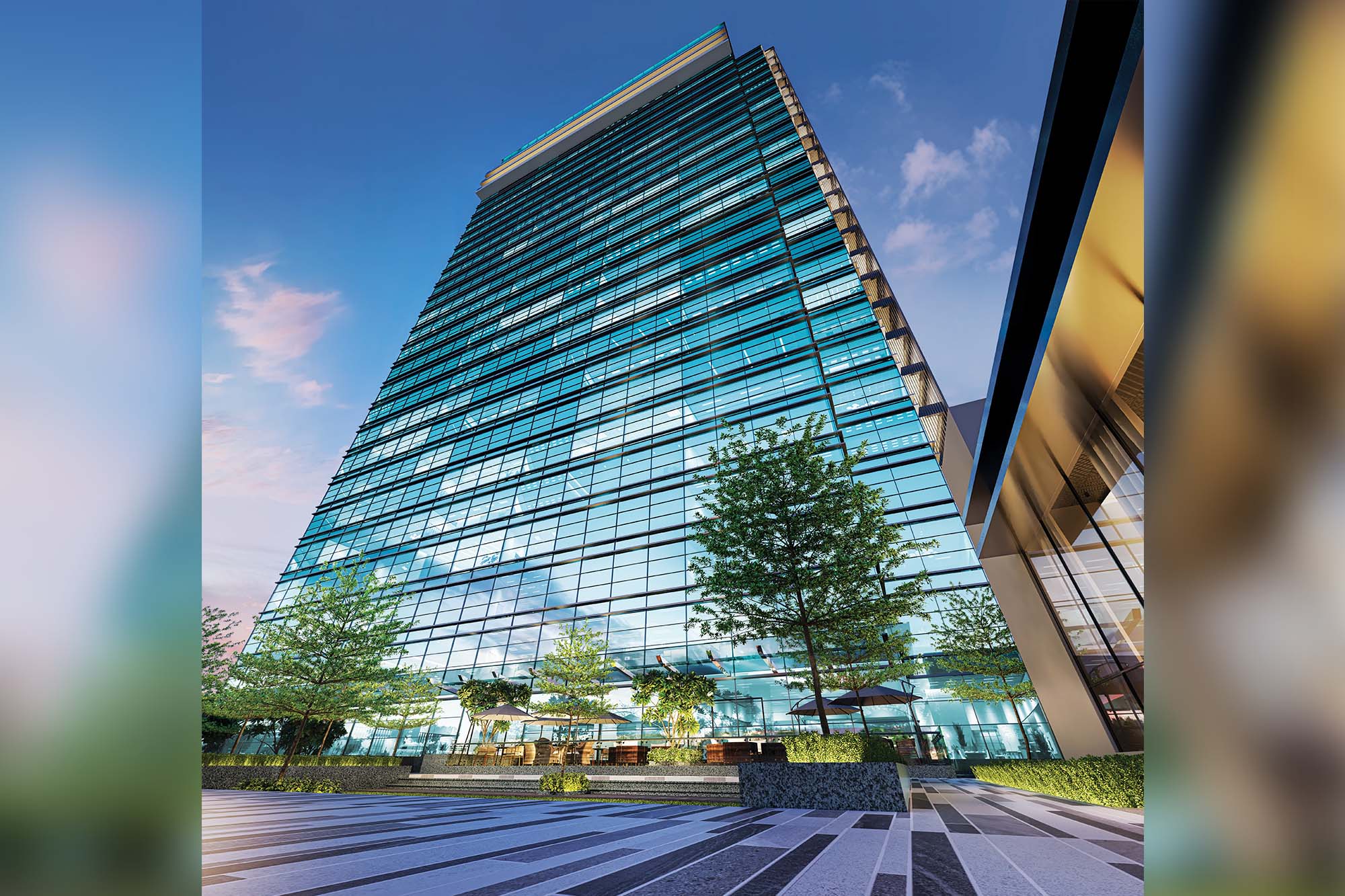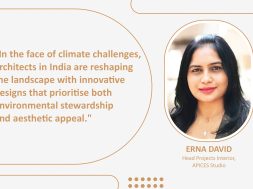Forging a symbiotic legacy between structures and nature

This interaction with Apices highlights their approach, which goes beyond structures and creates a symbiotic relationship between the built environment and the natural world, ensuring a sustainable legacy for future generations.
What passive design strategies do you incorporate to optimise energy efficiency in your building projects?
In India’s diverse climate zones, passive design strategies are crucial in optimising energy efficiency in building projects. By orienting buildings to capitalise on prevailing winds and solar exposure, architects can reduce reliance on mechanical heating and cooling systems, thus lowering energy consumption and operational costs over the building’s lifecycle.

How can architectural designs balance aesthetics and energy efficiency using sustainable elements?Balancing energy efficiency with aesthetic considerations in architectural designs involves integrating sustainable design elements that enhance visual appeal while minimising environmental impact using BIM and AI tools that support cautioned design development, allowing a low scope of service clashes or space handling complexities. Incorporating vernacular architecture and upcycling materials, such as traditional building materials and indigenous construction techniques, adds cultural significance and promotes energy efficiency by leveraging local resources and a circular economy.
Can you describe how you use design and energy mapping to enhance natural lighting and energy efficiency in buildings?
Maximising natural lighting in buildings requires careful consideration of daylight availability and glare control. Architects employ design techniques such as clerestory windows, light wells, and light shelves to optimise daylight penetration while minimising direct heat gain. Also, project simulation in energy mapping and saving software helps reduce reliance on artificial lighting or air conditioning, which enhances occupant comfort and improves energy efficiency, contributing to a more sustainable built environment.

How do Indian architects prioritise eco-friendly materials for sustainable building projects?
Selecting energy-efficient materials and technologies involves evaluating their environmental impact, performance characteristics, and life cycle costs. In India, architects prioritise materials with low embodied energy, such as locally sourced timber, bamboo, and recycled materials, to minimise their carbon footprint. Additionally, specifying energy-efficient building management systems, high-performance glazing, efficient HVAC equipment, and insulation materials helps minimise energy consumption and operational expenses while reducing environmental impact.
Can you shed some light on how you achieve net-zero projects energy neutrality and sustainability by integrating passive design, renewable energy, and efficient technologies?
In net-zero projects, architects adopt an integrated design approach that combines passive design strategies, renewable energy systems, and efficient building technologies to achieve energy neutrality. By incorporating features like rooftop solar panels, rainwater harvesting systems, and green roofs, architects aim to offset energy consumption and reduce reliance on grid power, thus mitigating environmental impact and promoting sustainable development in India’s built environment.
For more info visit: https://www.apices.in/
12
Cookie Consent
We use cookies to personalize your experience. By continuing to visit this website you agree to our Terms & Conditions, Privacy Policy and Cookie Policy.







